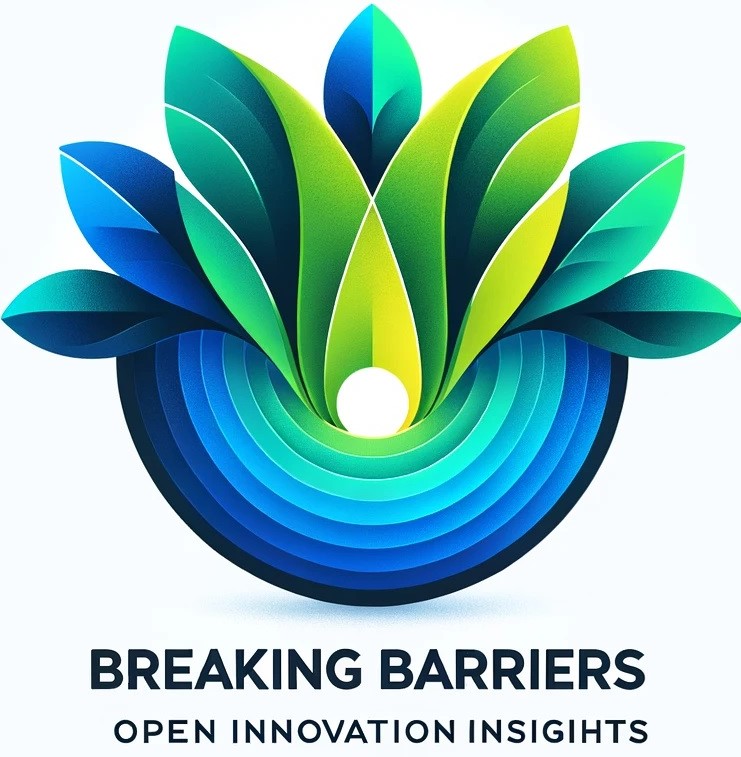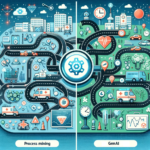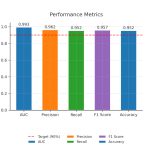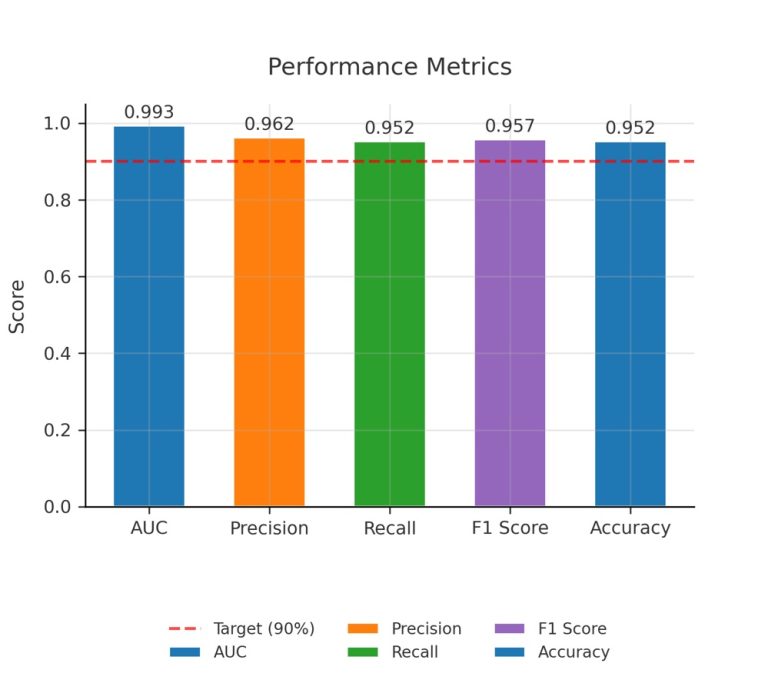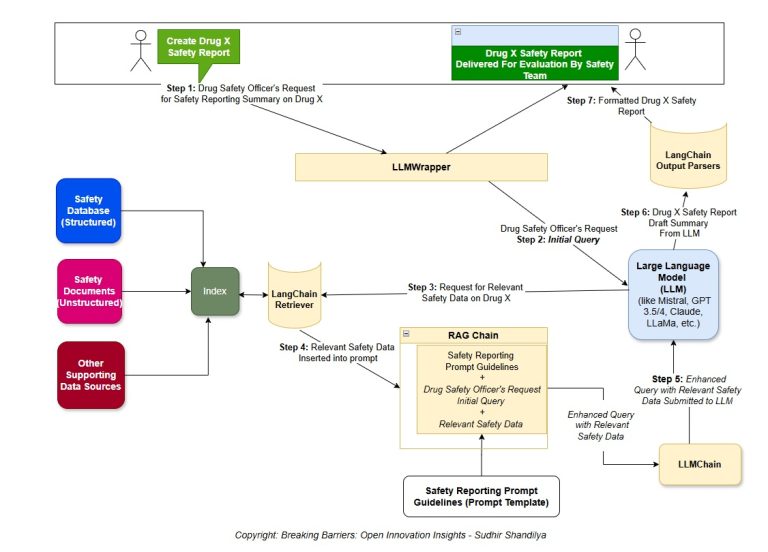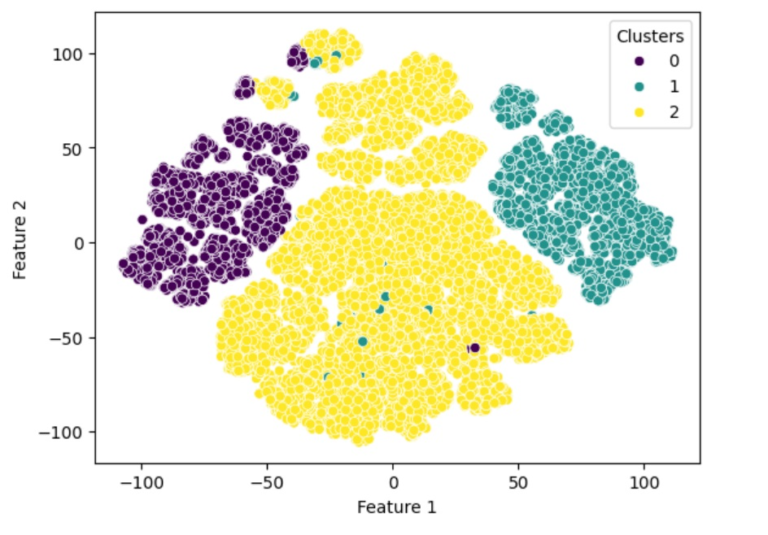This article conceptualizes a framework and cross-pollinates three of my previous articles on product management (Ref: “Innovating with Purpose – Essence and Application of Design Thinking“; “A Strategic Framework to Leverage Technology as an enabler of Business Value and Innovation“; and “What’s not an MVP” ) to make it specifically relevant to technology organizations in any company and industry tasked with creating internal products, solutions, and services for internal customers and how they should consider shifting from project-based to product-based organization. This article also incorporates the “Blue Ocean Strategy” into the framework, emphasizing “value-innovation.”
As organizations aim to remain competitive in a rapidly evolving digital landscape, shifting from a project-based to a product-based approach becomes critical to staying relevant and competitive for organizations and individuals building and supporting innovative technology products. A fundamental distinction between project and product-based approaches is that a Project has a start and end-point, whereas Product Management is a continuous lifecycle – in essence, the product is never complete; it evolves and gets better until it’s retired. This transformation integrates strategic innovation, lean processes, and design thinking to create value-rich, cost-effective, and creative products. However, plenty of maturity, knowledge, and focus are available to build products for external customers. There still needs to be an apt approach and clarity on how to enable a product-based mindset for products built for internal customers of an organization. This is primarily because no direct quantifiable P/L and other business performance metrics are often attached to the product built for internal customers. This article attempts to simplify and make technology product management relevant as we know and understand it within the context and purview of organizational boundaries, roles, and internal customers.
Step 1: Understand and Align with Business Processes
Objective: Begin by understanding existing business processes to comprehend and identify areas where Technology can enhance efficiency, effectiveness, and excellence. Your best bet for technological products could come from process and lean excellence exercises. Though it may sound counterintuitive to many professionals – especially the ones tasked with innovation in an organization- processes are the vehicle to enable an organization’s strategy, competitiveness, and predictive operations. We must start understanding which critical business processes to target and create solutions, products, and services for the environmental context. These processes bring relevance to the solution and where your solution will eventually reside. If there is yet to be a business process, you should work on defining/establishing that process first and with a clear understanding of where the solution you are proposing will fit. You will be surprised that just by doing this exercise, often, a solution we thought was a good one would start to make no sense.
Technology or application of Technology (we call this application as products or solutions) don’t exist in silo; they enable processes. Distinction between and understanding of Operational and Management processes should provide the environmental context in which your solution/product will eventually reside. Building any product/solution without process/environmental context is akin to building a product with little value to anyone. It’s the same philosophy as in the traditional product management context when products are created without understanding the customer’s needs, the value the product brings, and the environment in which the value promised will eventually be realized by the customers to meet their needs.
Action: Classify your processes into operational and Management processes. Operational processes systematically create services or products, aiming for economies of scale and efficiency. Management processes involve strategic planning and resource allocation to foster an environment conducive to innovation.
Benefit: This step ensures a deep alignment between technology applications and business objectives, setting a solid foundation for transitioning to a product-based approach. This is also when you begin to visualize and align with the strategic bottom lines expected of your organization by your external stakeholders – customers, investors, government, or anyone else outside your organization.
Step 2: Shift Focus to Strategic Value-Innovation
Objective: Use Technology as a strategic enabler rather than just a support function. This involves looking beyond Technology’s traditional applications to explore how it can create new value for the organization at a lower cost.
Action: Implement a dual focus on automation (to free up resources) and information transformation (to create new knowledge and insights).
Benefit: By focusing on strategic innovation, you create products that solve problems and open new avenues for business growth and customer engagement.
Step 3: Integrate Lean Thinking and Design Thinking
Objective: Merge lean thinking (emphasizing efficiency and waste reduction) with design thinking (focusing on user-centric problem-solving and creativity).
Action: Organize workshops and training sessions to foster a culture where employees think lean and creatively. Encourage teams to identify and eliminate non-value-added activities while exploring innovative solutions to customer problems.
Benefit: This integration encourages a holistic approach to product development, where solutions are efficient and deeply aligned with user needs.
Step 4: Develop Value-Driven Technology Solutions
Objective: Ensure that every technology solution developed provides clear and measurable value to internal customers within the context of a business process in which it will reside and integrate.
Action: Use a structured framework to define and measure value across different levels—functional (basic needs), emotional (personal connect), life-changing (significant impact), and social impact (broader benefits).
Benefit: This step ensures that products are developed with a clear focus on delivering multi-level customer value, which increases adoption and satisfaction among internal users.
Step 5: Foster an Iterative Development and Feedback Loop
Objective: Establish a continuous loop of feedback and iteration to refine products based on real-world use and feedback.
Action: Implement regular checkpoints where internal customers can provide feedback on the products. Use this feedback to make iterative improvements, ensuring the product evolves to meet changing needs.
Benefit: This iterative process enhances product quality over time and keeps the development team closely aligned with customer needs, thereby increasing the likelihood of product success.
Step 6: Measure Success and Scale Strategically
Objective: Evaluate the success of technology products based on predefined KPIs and scale solutions that demonstrate clear business value.
Action: Define success criteria linked to business objectives (e.g., increased productivity, cost reduction, user satisfaction). Once a product meets these criteria, consider broader deployment and integration into other business areas.
Benefit: This careful approach to scaling ensures that only the most effective solutions are rolled out widely, maximizing ROI and impact on organizational goals.
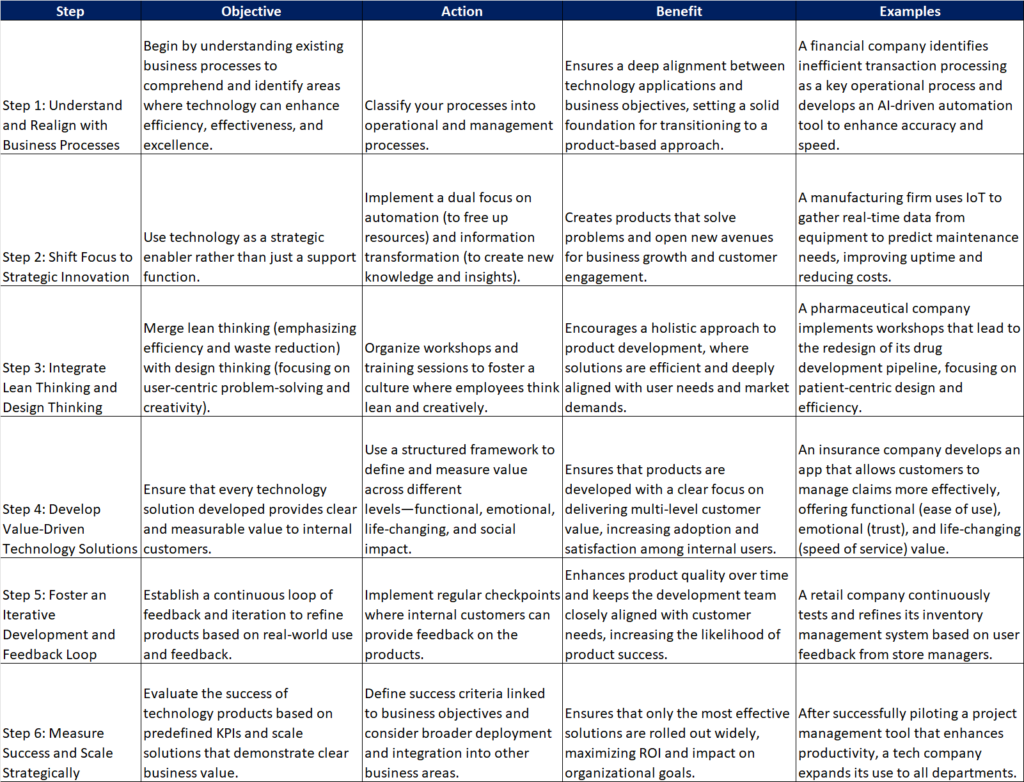
Transitioning from a project to a product management approach in Technology within an organization is a strategic move that requires a fundamental shift in mindset and operations. Technology leaders can ensure that their teams support and drive business success in the digital age by focusing on process alignment, strategic innovation, and customer-centric product development.
This guide provides a practical roadmap for project managers to evolve into product managers, focusing on creating high-value, innovative technology solutions that align with broader business strategies and customer needs.
